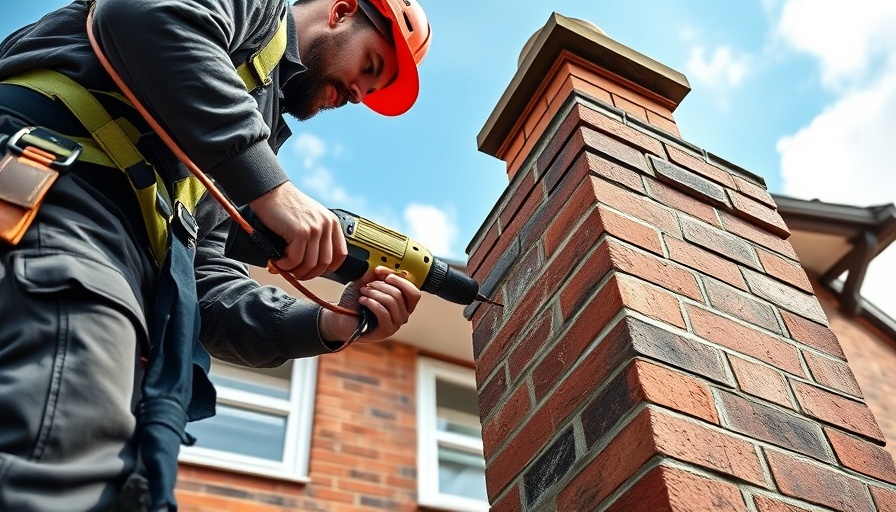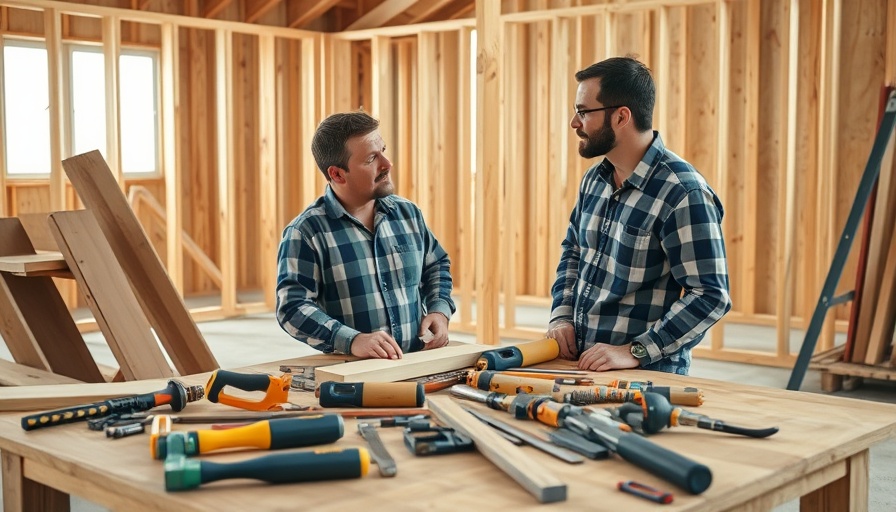
The Essential Guide to Home Chimney Flashing
When it comes to home improvement, ensuring your property is waterproof is crucial, especially around critical areas like chimneys. In the video Chimney Flash | This Old House, Mark demonstrates a crucial flashing job that will not only add structure but also safeguard against water damage. Let's break down this essential process, looking at both its age-old importance and modern techniques.
In Chimney Flash | This Old House, the discussion dives into essential chimney flashing techniques, helping homeowners ensure their property remains safe from water damage.
Understanding the Basics: What is Chimney Flashing?
Chimney flashing refers to the materials that seal the intersection between the chimney and the roof. Properly installed flashing prevents water from infiltrating the vulnerable spaces where the chimney meets the house. In the actual video, Mark starts with preparing a foundation for the addition around the chimney, emphasizing the need for solid groundwork to keep everything watertight.
Why Proper Installation Matters
Homeowners often overlook areas like flashing during renovations or maintenance, yet improper installation can lead to serious consequences. Water exposure can rot wooden beams, promote mold growth, and degrade air quality within the home. By paying careful attention to details like those shown in Mark's demonstration, homeowners can save themselves from costly repairs down the line.
Practical Tips for DIY Chimney Flashing
While hiring a professional can provide peace of mind, many homeowners might find success in tackling this job themselves. Here are some helpful steps inspired by the video:
- Prepare Your Materials: Gather quality materials, such as copper flashing, to ensure longevity.
- Install a Reglet: As shown by Mark, cutting a reglet into the brick provides a snug fit for the flashing, enhancing its watertight properties.
- Use Epoxy for Stability: Epoxy can help secure the rebar in place, ensuring your structure is solid.
- Seal with Caulk: Don’t skip the caulking—this adds an additional layer of waterproofing to the installation.
Common Misconceptions About Chimney Flashing
One common misconception is that chimney flashing doesn’t require regular inspection. In reality, its efficacy can diminish over time due to weather, movement in the roof structure, or deterioration of materials. It's vital for homeowners to periodically check their chimney flashing, especially after extreme weather conditions.
Creating Value in Home Improvements
Investing time and effort into well-executed home projects like chimney flashing not only improves overall property value but also ensures a safe living environment. Understanding these essential renovation techniques can lead to more rewarding practical applications, and ultimately a homemaker who feels empowered.
Whether you're a seasoned DIY enthusiast or a first-time renovator, understanding and maintaining your home’s structural components is vital for protection against the elements. This knowledge equips you to handle repairs with confidence and might even inspire you to tackle further home improvement projects.
If you’re looking for more insightful home improvement tips, make sure to explore additional projects on This Old House. Understanding these fundamentals today paves the way for a more robust and beautiful home tomorrow.
 Add Row
Add Row  Add
Add 




Write A Comment